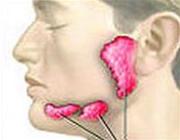Due to a chronic autoimmune disease, some individuals suffer from chronic dysfunction of the salivary and lacrimal glands, leading to dry eye syndrome and dry mouth.
This condition is known as Sjögren’s syndrome, with a prevalence in women nine times higher than in men. The disease often appears particularly during menopause. Around 50% of cases are of unknown origin, classified as primary dry eye and mouth syndrome. Possible related causes include other autoimmune diseases such as rheumatoid arthritis, systemic lupus erythematosus, and systemic sclerosis (secondary dry eye and mouth).
 |
|
(Image: TTO) |
The symptoms include dry eyes, which can lead to dry conjunctivitis, and dry mouth causing oral mucosal inflammation and cavities. Enlargement of the parotid gland can be palpated in 50% of cases. Other manifestations may include dry nasal mucosa, chronic bronchitis, pulmonary fibrosis, skin atrophy, achlorhydria, and vasculitis.
Ocular Damage
One-third of patients with dry conjunctivitis do not complain about their eyes. Among the functional disorders, the sensation of a foreign body in the eye is the most uncomfortable. Less common but highly indicative symptoms include the absence of tears when stimulated, such as when peeling onions or during emotional moments. Thick secretions can cause eyelids to stick together in the morning. There may be a sensation of a film over the eyes, which disappears upon blinking due to mucus deposits on the cornea. Photophobia can cause irritation. Other symptoms include eye pain, a stinging sensation in the eye, and less frequent difficulty in blinking. Patients may experience decreased vision due to corneal damage.
Possible complications include corneal ulcers, iridocyclitis, corneal perforation, and scarring.
Salivary Gland Damage
Initially, patients experience dry mouth and lips, feeling difficulties when chewing and swallowing, which necessitates drinking water frequently while speaking and eating.
In later stages, dry mouth syndrome becomes pronounced, culminating in difficulties chewing and swallowing, leading patients to frequently moisten their mouths by sucking on sour candies, continually licking their lips, and drinking water throughout the day and night. The sensation of dry mouth becomes highly uncomfortable, with a burning sensation that intensifies when consuming sour foods and spices, leading to painful cracks at the corners of the mouth and on the tongue. Taste disturbances may occur. Over time, this condition predisposes individuals to oral infections, especially fungal infections.
Dental conditions worsen: cavities, early tooth wear, and gradual loss of jaw segments lead to tooth loss. Dentures can cause discomfort for patients. In advanced stages, the oral mucosa appears dry, pale, and dull, with a loss of papillae on the tongue, deep grooves, and poor dental health.
Treatment
For dry eye syndrome, saline eye drops or artificial tears should be used. This improves function in 45% of cases. Mucolytic agents can be used: eye drops containing hyaluronidase and bromhexine (Bisolvon). Eye drops containing corticosteroids are strictly contraindicated due to the risk of infection, cataracts, and corneal perforation. Regular use of antibiotic eye drops is insufficient to prevent infections.
To treat dry mouth, patients should suck on sour candies or chew gum. Some patients need to keep their mouths moist by drinking water frequently or using glycerin. Electric devices can be utilized to stimulate saliva production. There are also saliva substitutes delivered via spray (artificial saliva) or released from a container placed in the mouth.
To reduce cavities, excellent oral hygiene must be maintained: use fluoride toothpaste, brush teeth twice a day, remove tartar, quit smoking, and treat any oral infections (fungal). It is important to avoid using atropine, anticholinergic drugs, or psychotropic medications. If the parotid gland is significantly enlarged, surgical intervention may be necessary. Radiation therapy is contraindicated as it facilitates the development of malignant lymphoproliferative syndromes.


















































